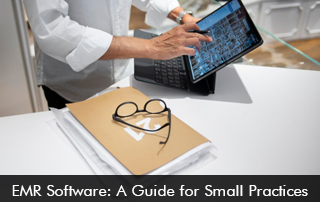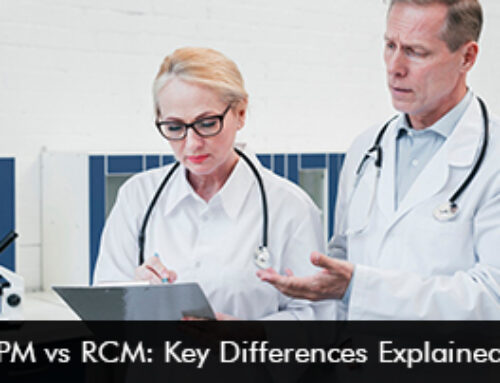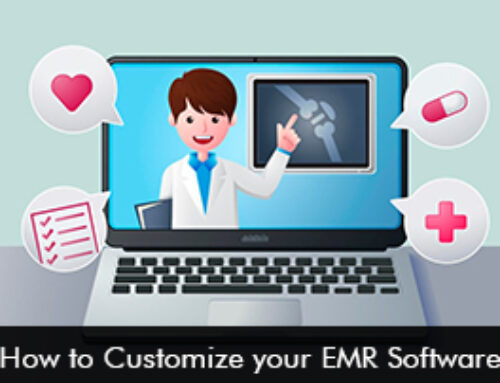EMR software has become an indispensable tool in the healthcare industry, significantly changing the way small practices manage patient information and care. With the right Electronic Medical Records (EMR) system, small healthcare providers can improve practice management, streamline their workflows, and offer better patient care. In this guide, we’ll dive into what EMR software is, its benefits, how to choose the right system for your small practice, and the essential features to look for.
Understanding EMR Software
Electronic Medical Records software, commonly known as EMR software, is a digital solution that allows healthcare providers to create, store, manage, and track patient medical records electronically. Unlike traditional paper records, EMR software provides a more organized, efficient, and accessible way to handle patient information.
The Shift from Paper to Digital
The transition from paper-based records to digital ones has been transformative for small practices. It reduces the risk of human errors, ensures better compliance with healthcare regulations, and facilitates easier communication between healthcare providers.
The Importance of EMR Software for Small Practices
Small practices might not have the vast resources that larger medical institutions boast, but they can still reap significant benefits from implementing EMR software.
Enhanced Practice Management
EMR systems often come with integrated practice management tools that help streamline administrative tasks, such as scheduling appointments, billing, and processing insurance claims. These features can save time and reduce the administrative burden on staff, allowing them to focus more on patient care.
Improved Patient Care
With EMR software, healthcare providers have immediate access to a patient’s medical history, which can improve the decision-making process and patient outcomes. It also supports the use of decision-support tools that can prompt providers with reminders and alerts for patient care interventions.
Secure and Easy Access to Patient Data
Security is paramount when it comes to patient data. EMR systems provide secure access to records and ensure that patient information is only accessible to authorized personnel. Additionally, the easy retrieval of records can significantly speed up the care process.
EMR Software Interoperability
Interoperability refers to the ability of different healthcare systems and software to exchange and interpret shared data. A good EMR system for small practices should be able to communicate with other systems, facilitating referrals and coordination of care with other healthcare providers.
Choosing the Right EMR Software for Your Practice
When selecting an EMR system for your small practice, consider the following factors to ensure you make the right choice.
Assess Your Practice’s Needs
Before you begin your search, understand the specific needs of your practice. Consider the size of your practice, the specialties you offer, and the workflow of your staff. This will help you determine the features you need in an EMR system.
EMR Software and Budget Considerations
Cost is a significant factor for small practices. You’ll want to find a system that fits your budget while still providing the necessary functionality. Remember to consider not just the initial cost but also any ongoing fees for support, updates, and maintenance.
User-Friendliness
The EMR system should be intuitive and easy to use. Complex systems can lead to frustration and resistance among your staff. Look for software with a user-friendly interface that requires minimal training.
EMR Software Support and Training
Ensure that the vendor offers comprehensive support and training options. This is crucial for the successful implementation and ongoing use of the EMR software.
Scalability
Choose an EMR system that can grow with your practice. As your practice expands, you may need to add more users or features to your EMR system. A scalable solution will save you from having to switch systems in the future.
Essential EMR Features for Small Practices
When evaluating EMR systems, look for these essential features that can benefit small practices:
Customizable Templates
EMR systems should offer customizable templates for different specialties and types of visits. This allows healthcare providers to quickly document patient encounters without having to input repetitive information.
e-Prescribing
The ability to send prescriptions electronically directly to pharmacies improves efficiency and patient convenience, while also reducing prescription errors.
Clinical Decision Support
Clinical decision support tools can assist healthcare providers with diagnosis and treatment decisions by providing evidence-based recommendations and alerts.
Patient Portal
A patient portal allows patients to access their health records, request prescription refills, schedule appointments, and communicate with their healthcare providers, enhancing patient engagement and satisfaction.
Mobile EMR Software Access
Mobile access to the EMR system enables providers to view patient information and update records on the go, which can be particularly useful for providers who work at multiple locations.
Reporting and Analytics
Reporting tools help practices track performance metrics and patient outcomes, which can inform business decisions and improve the quality of care.
Integration Capabilities
The ability to integrate with other systems, such as billing and scheduling software, creates a seamless workflow and reduces the need for duplicate data entry.
Implementing EMR Software in Your Practice
Once you’ve chosen an EMR system, the implementation process is critical to its success.
Plan the Transition
Create a detailed plan for transitioning from paper records to the EMR system. This should include timelines, staff responsibilities, and a strategy for data migration.
Train Your Staff
Comprehensive training for all users is essential. Make sure everyone understands how to use the system and is comfortable with the new workflows.
Monitor and Adjust
After implementation, monitor the system’s performance and gather feedback from your staff. Be prepared to make adjustments to improve usability and efficiency.
Final Thoughts
Choosing and implementing the right EMR software is a significant step for small practices looking to modernize and improve their operations. By carefully evaluating your needs, budget, and the features that are most important to your practice, you can select a system that enhances practice management, improves patient care, and positions your practice for future growth.
Remember, the goal of EMR software is not just to digitize patient records, but to provide a tool that supports your practice in delivering the best possible care to your patients. With the right EMR system, small practices can achieve efficiency, compliance, and patient satisfaction that rivals even the largest healthcare institutions.







